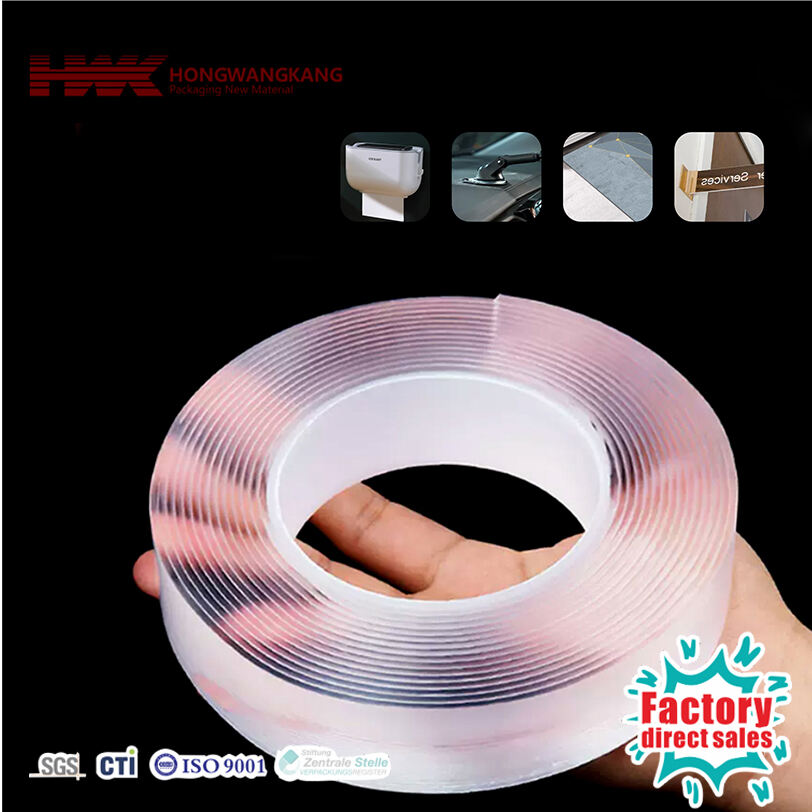Dlaczego folia polietylenowa LDPE jest idealna do zastosowań w opakowaniach elastycznych
Bezpieczeństwo produktu, zrównoważony rozwój i opłacalność były kluczowymi aspektami w dynamicznie zmieniającym się świecie opakowań. Gdy mowa o opakowaniach elastycznych, istnieje wiele złożonych materiałów, wśród których jednym z najważniejszych jest folia polietylenowa o niskiej gęstości (LDPE). AD-odporna, trwała folia LDPE udowodniła, że jest podstawowym materiałem w przemyśle, od spożywczego i napojowego po farmaceutyczny i elektroniczny. W artykule tym omówione zostaną właściwości, które czynią folię polietylenową LDPE odpowiednią do zastosowań w opakowaniach elastycznych.
Właściwości niskiej gęstości: Poprawa rozciągliwości w folii rozciągliwej PE
Niska gęstość to jedna z charakterystycznych właściwości LDPE, co znacznie zwiększa plastyczność materiału. Ta właściwość umożliwia producentom wytwarzanie folii PE o właściwościach stretch, które są jednocześnie wytrzymałe i elastyczne, dlatego stanowią idealną alternatywę do okrywania i mocowania przedmiotów o nieregularnych kształtach. Plastyczność folii LDPE pozwala optymalnie zabezpieczyć razem produkty, co zmniejsza prawdopodobieństwo ich przesuwania się i uszkadzania w trakcie transportu. Dodatkowo, ta elastyczność zmniejsza ilość zużywanego materiału, co pozwala oszczędzić koszty oraz ograniczyć negatywny wpływ na środowisko.
W logistyce i transporcie w szczególności folie strechowane z LDPE są najbardziej cenione, ponieważ pożądane jest ich rozciągnięcie i przyleganie bez pęknięć. Elastyczność LDPE umożliwia folii dostosowanie się do ruchów i osiadania, które zazwyczaj występują podczas transportu, zapewniając, że opakowane towary mogą być bezpiecznie zabezpieczone jako całość. Dodatkowo LDPE ma niską gęstość, co czyni ją lekką, obniżając całkowity koszt transportu bez utraty wytrzymałości potrzebnej do amortyzacji zawartości.
Integralność zamknięcia: Wpływ grubości folii LDPE na szczelność opakowania
Jakość i świeżość produktów pakowanych odgrywają kluczową rolę w takich branżach jak przemysł spożywczy i farmaceutyczny, a integralność uszczelnienia jest głównym czynnikiem gwarantującym świeżość i jakość produktu. Duża ilość folii LDPE ma istotne znaczenie dla szczelności. Gęstsze folie LDPE lepiej chronią przed powietrzem i wilgocią, a także zanieczyszczeniami, które powodują degradację produktów nawet podczas dłuższego transportu.
Bezpieczeństwo zapewniane przez folię LDPE obejmuje również możliwość zgrzewania termicznego folii. Proces ten, znany jako zgrzewanie termiczne, polega na stopieniu krawędzi folii nałożonych na siebie, uzyskując trwałe, odporno na manipulacje połączenie, które nie jest łatwo wpływu środowiska. Grubość folii LDPE można dostosować, aby dać producentom możliwość określenia stopnia ochrony wymaganego w zależności od rodzaju produktu. Na przykład, bardziej kruchy produkt może wymagać grubszych folii, aby wytrzymać uszkodzenia i wycieki, podczas gdy produkt mniej wrażliwy na temperaturę może używać cieńszych folii, które nadal zapewniają wystarczającą ochronę, ale wymagają mniej materiału do jej uzyskania.
Optymalizacja grubości folii i siły zamknięcia pozwala na uzyskanie folii LDPE o dokładnie odpowiedniej grubości, dopasowanej do wymagań opakowaniowych, i nie więcej. Możliwość dostosowania jest szczególnie przydatna na obecnym rynku, który odnotował wzrost tendencji do używania mniejszej ilości materiału i osiągnięcia wyższego stopnia zrównoważoności.
Wszechstronność i zrównoważony rozwój
Folii LDPE nadaje się również duża elastyczność w zastosowaniu opakowaniowym, właśnie dzięki uniwersalności LDPE. Łatwo jest również laminować ją z innymi substancjami lub współekstrudować dodatkowe właściwości do materiału, takie jak odporność na działanie UV, właściwości antystatyczne lub dodatkowa ochrona barierowa. To nadaje folii LDPE dużą elastyczność w zastosowaniu do wielu funkcji opakowaniowych, na które poszczególne branże muszą się dostosować.
Należy również wziąć pod uwagę czynnik środowiskowy folii LDPE. W kontekście dążenia przemysłu do zrównoważoności, LDPE staje się atrakcyjnym wyborem, ponieważ może być recyklingowana. Rosnące zainteresowanie foliami LDPE z dodatkiem surowca pochodzącego z recyklingu komunalnego stymuluje produkcję wśród wielu firm jako sposób na zmniejszenie śladu ekologicznego i przestrzeganie zasad gospodarki o obiegu zamkniętym. Takiego podejścia do zrównoważoności wspiera również fakt, że obecnie aktywnie rozwijane są biodegradowalne alternatywy dla LDPE, które mają na celu wykorzystanie praktycznych właściwości tradycyjnego LDPE i zapewnienie jednocześnie opłacalnych możliwości utylizacji.
 EN
EN
 AR
AR
 CS
CS
 DA
DA
 NL
NL
 FI
FI
 FR
FR
 DE
DE
 EL
EL
 HI
HI
 IT
IT
 JA
JA
 KO
KO
 PL
PL
 PT
PT
 RO
RO
 RU
RU
 ES
ES
 TL
TL
 IW
IW
 ID
ID
 SR
SR
 UK
UK
 VI
VI
 HU
HU
 TH
TH
 TR
TR
 FA
FA
 AF
AF
 MS
MS
 GA
GA
 BE
BE
 IS
IS
 HY
HY
 BN
BN
 LA
LA
 MN
MN
 SO
SO
 MY
MY
 KK
KK

